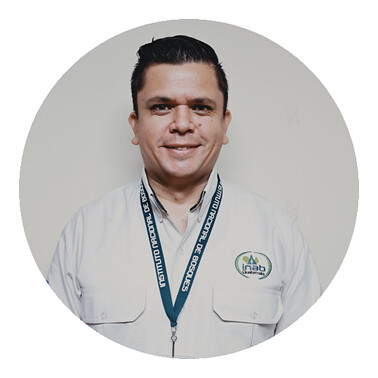FAO and UN-REDD to explore integration of forest and landscape restoration into national forest monitoring systems.

Within the framework of the UN-REDD Programme, the Food and Agriculture Organization of the United Nations (FAO) is excited to host a webinar “Integrating Forest and Landscape Restoration into National Forest Monitoring Systems.”
Date: 31 August, 2021
Time: 8:00 – 9:00 (San Jose time), 10:00 – 11:00 (Santiago time), 16:00 – 17:00 (Rome time)
Register now at: bit.ly/FRL-NFMS
*This event will be in Spanish with English translation; recordings will be available in both languages.
With the launch of the UN Decade on Ecosystem Restoration in June of this year, the global community is increasing efforts to restore ecosystems. The Food and Agriculture Organization of the United Nations (FAO) is among those international agencies leading this movement. As a UN Decade co-lead, FAO is coordinating efforts to monitor progress, identify best practices, and support forest and landscape restoration (FLR). This webinar will showcase recent experiences from Latin American and Caribbean countries working on integrating FLR monitoring into their National Forest Monitoring Systems (NFMS).
In recent years, many countries have developed NFMS. Established NFMS can be strengthened to accommodate data collection from FLR, rather than designing independent monitoring structures. The steps for integrating FLR monitoring into NFMS will be discussed during this webinar hosted by FAO and UN-REDD.
Further, the webinar will mark the launch of the publication “Integrating Forest and Landscape Restoration into National Forest Monitoring Systems.” Based on the Voluntary guidelines on national forest monitoring (VGNFM), this document explores experiences from Latin American and Caribbean countries whose forest monitoring systems require further development in order to integrate FLR monitoring. The new publication further proposes an approach to this process, taking into consideration information requirements and the needs of key stakeholders.
The webinar will not only launch the publication of the same name but provide an opportunity for knowledge exchange among experts in FLR and NFMS. It will also showcase recent experiences from Latin American and Caribbean countries working on integrating FLR monitoring into their NFMS.
Agenda and Speakers
Opening remarks:
-
- Astrid Agostini, Coordinator REDD+/National Forest Monitoring Cluster, UN-REDD Management Group Member, FAO Forestry Division
Forum and Interactive Q&A Participants:
-
- Hugo Flores, Director Forest Management and Restoration. INAB, Guatemala
- Edersson Cabrera, Coordinator of the Forest and Carbon Monitoring System. IDEAM, Colombia
- René Zamora, Latin America Research Coordinator Global Restoration Initiative / World Resources Institute
Launch of the publication “Integrating Forest and Landscape Restoration into national forest monitoring systems
-
- Carla Ramirez, National Forest Monitoring and Inventory Expert, FAO Forestry Division
Moderation: David Morales, Forestry Officer, FAO Forestry Division
More about the speakers:
About the UN-REDD Programme:
The UN-REDD Programme is the United Nations Collaborative Programme on Reducing Emissions from Deforestation and forest Degradation (REDD+) in developing countries. The Programme was launched in 2008 and builds on the convening role and technical expertise of the Food and Agriculture Organization of the United Nations (FAO), the United Nations Development Programme (UNDP) and the United Nations Environment Programme (UNEP). The Programme supports nationally led REDD+ processes and promotes the informed and meaningful involvement of all stakeholders, including indigenous peoples and other forest-dependent communities, in national and international REDD+ implementation. Additionally, the Programme supports national REDD+ readiness efforts in 65 partner countries, spanning Africa, Asia-Pacific and Latin America.
Related links:
- The UN Decade on Ecosystem Restoration 2021-2030: https://www.decadeonrestoration.org/es
- FAO´s work on National Forest Monitoring: http://www.fao.org/national-forest-monitoring/en/
- FAO´s Forest and Landscape Restoration Mechanism: http://www.fao.org/in-action/forest-landscape-restoration-mechanism/background/en/
- Framework for Ecosystem Restoration Monitoring (FERM): http://www.fao.org/national-forest-monitoring/ferm/en/
- Guidelines for Forest landscape restoration in the Tropics ITTO: https://www.itto.int/direct/topics/topics_pdf_download/topics_id=6511&no=1&disp=inline
- The Bonn Challenge: https://www.bonnchallenge.org/
- Initiative 20x20: https://initiative20x20.org/






